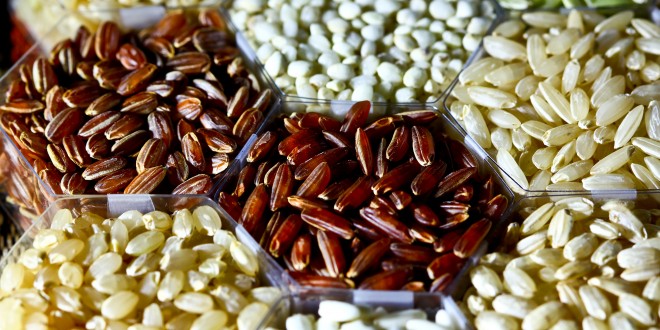By Ivy Wang
Rice is a staple food in many different cultures and is typically a good source of carbohydrates and fiber. However, there are many different types of rice, and each type has its benefits and setbacks.
White rice is possibly the most commonly known and eaten type of rice. It is found in most stores and is sold in affordable packages of various sizes. Eating white rice at each meal is an easy way to get carbohydrates and provides adequate energy. Unfortunately, white rice may also lead to fat gain and a rise in blood sugar if consumed in large quantities at a time. Not to worry, though; it is highly unlikely that a person will consume “too much rice” by simply eating a potion at each meal.
Brown rice is much more nutrient-dense and generally healthier than white rice. It contains high levels of Vitamin B, phosphorous, magnesium, and fiber due to its hard outer shell. Magnesium is necessary for proper muscle function, and studies have shown that about half of all Americans do not consume enough magnesium. Eating brown rice is an easy way to ensure that one gets enough magnesium in their diet. Since brown rice has a higher fiber content than white rice, it does not digest as quickly. Substituting in brown rice for white rice in daily meals may help reduce or get rid of unhealthy snacking habits, as eating brown rice will make people feel full for a longer time. However, scientific studies show that brown rice has a higher concentration of arsenic, a substance that may cause cancer over long periods of time, than white rice. One can reduce the effects of this problem by consuming a combination of brown rice and white rice at the same time.
The final type of commonly available rice is sprouted rice. This type of rice is unique because it has actually started to “sprout”, or become a plant. The sprouting process increases the nutritional value of the rice and also releases gamma-aminobutyric acid (GABA), which supports heart health and helps boost a person’s mood. Sprouted foods are usually easier to digest, because the hard outer shell of the seed or grain softens in the process of sprouting. However, sprouted foods are often the most expensive because they require a unique sprouting process. They are also rarely sold in large, bulk-size packages for the same reason.
White rice, brown rice, and sprouted rice are not the only three types of rice. There are many other types of rice or rice alternatives that also provide fiber, carbohydrates, and other important nutrients. Try out some new types of rice — it is important to eat a variety of rice to have a balanced nutrient intake!
 Tempus Magazine By Students, For Students
Tempus Magazine By Students, For Students 



